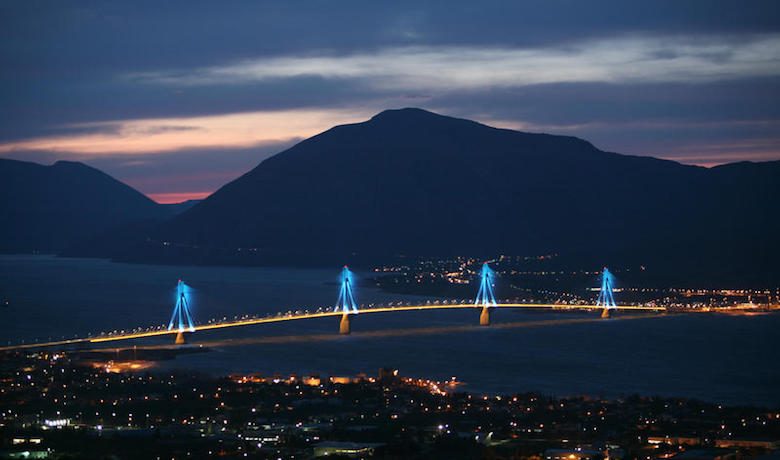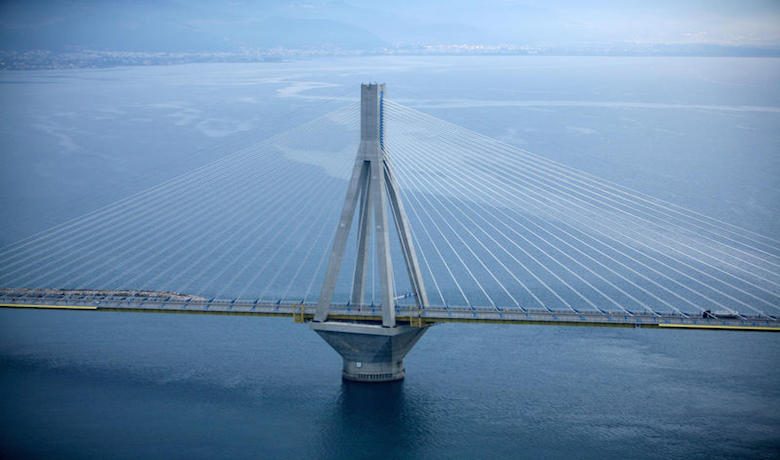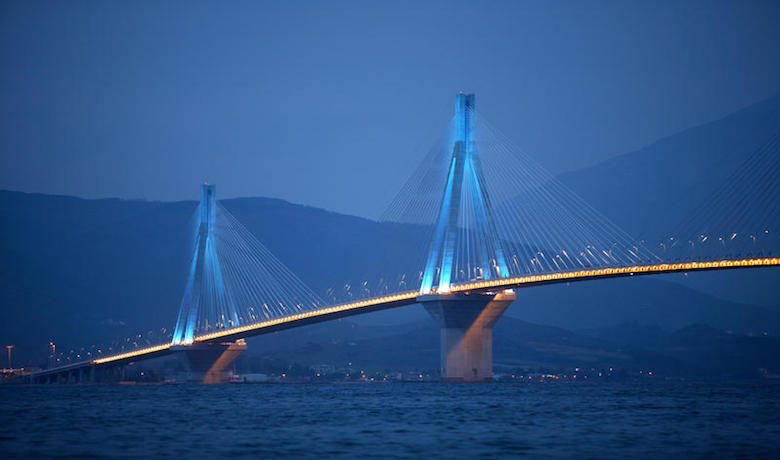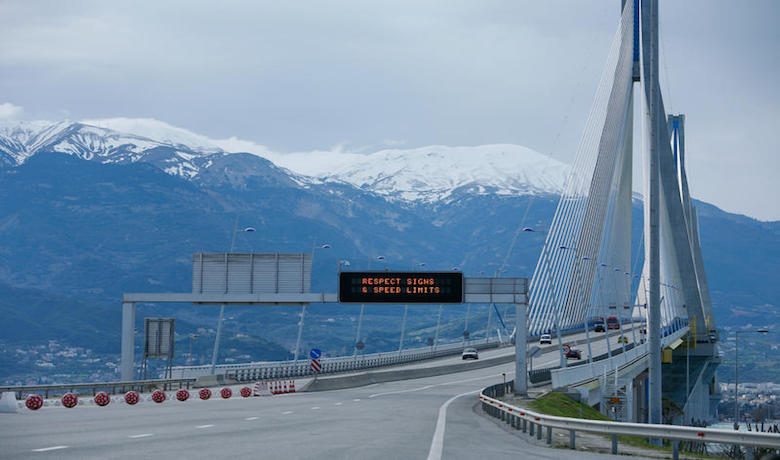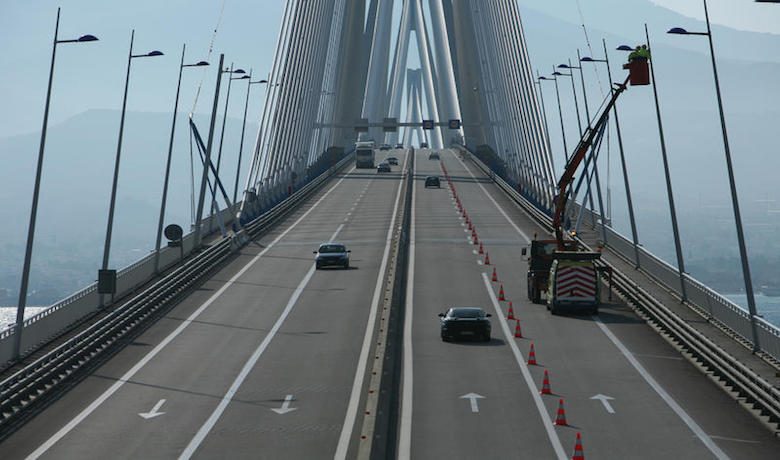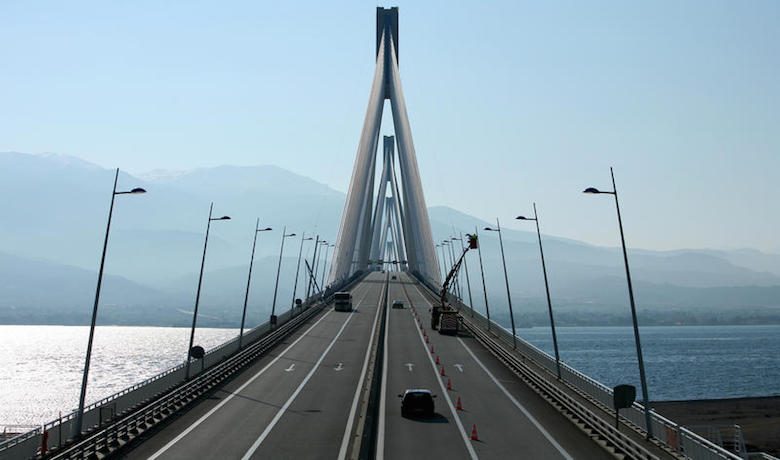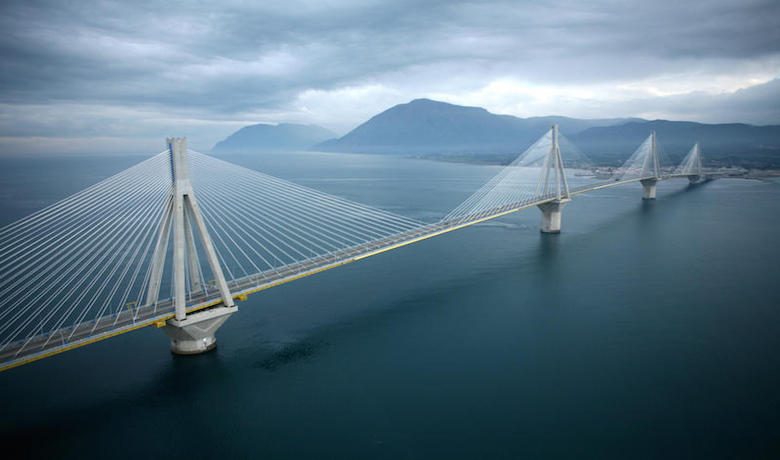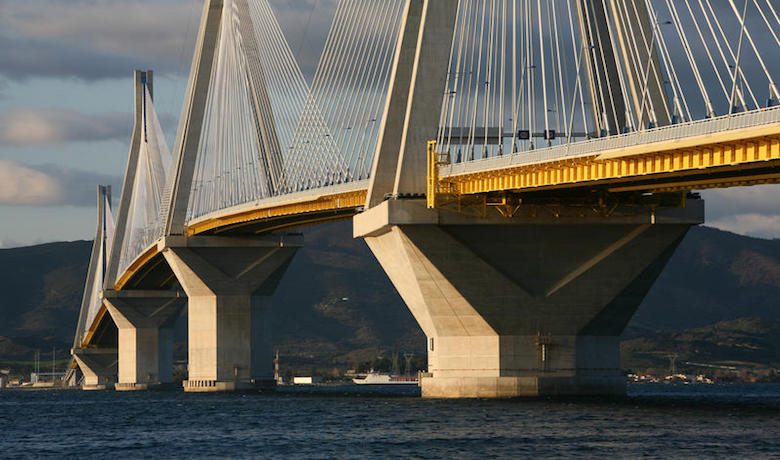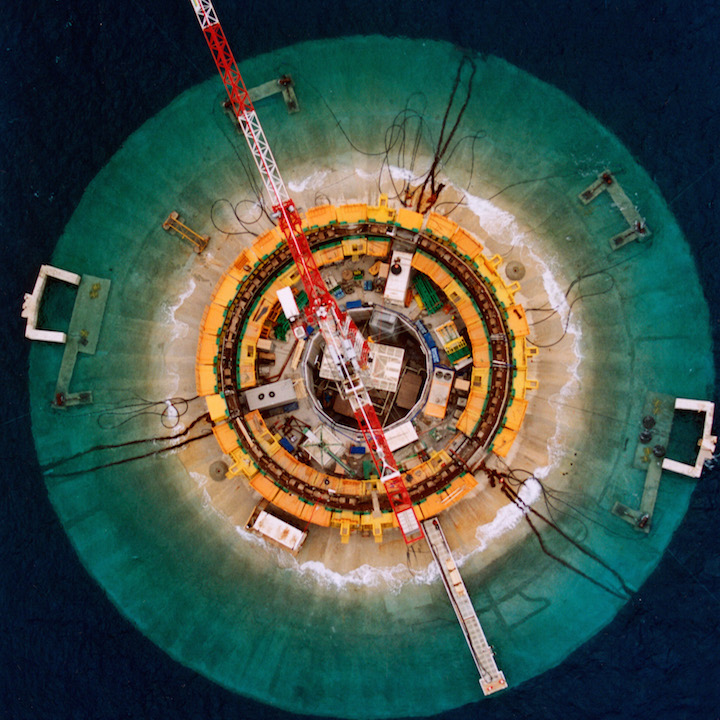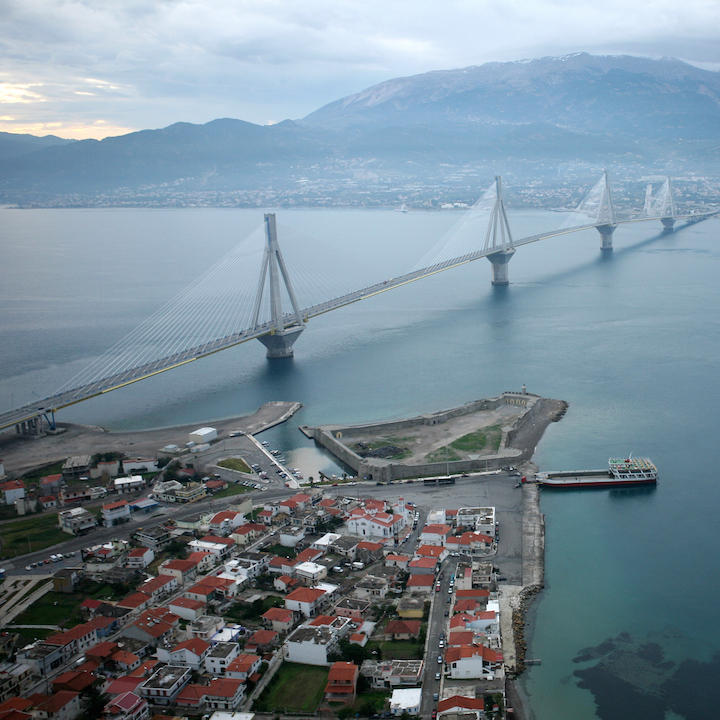BACKGROUND
The idea of building a bridge over the 3-kilometre-long Strait of Corinth is nothing new. As early as 1880, Prime Minister Charilaos Trikoupis considered building a bridge over the strait. In the past 40 years, the Gulf of Corinth has experienced no fewer than 10 earthquakes that have widened the gap between the Peloponnese region and the mainland by 8 millimetres. In the early 1990s, the project became technically feasible. In 1996, Gefyra, a subsidiary (53%) of the VINCI Group, won the call for tenders. The first stone of the bridge was placed in 1998 by Prime Minister Costas Simitis. The seven-year work schedule was divided into two phases: an initial two-year period devoted to feasibility studies followed by a five-year construction period. In May 2004, the Rion-Antirion Bridge was completed – five months ahead of schedule and just in time for the Athens Olympic Games.


